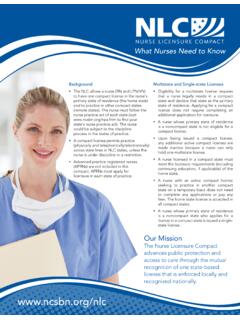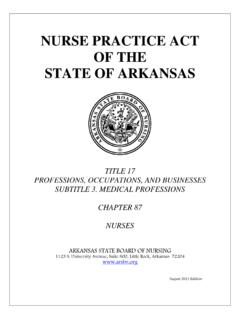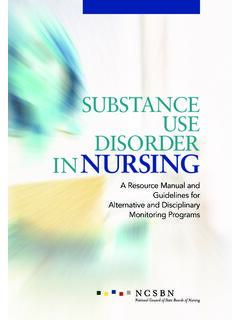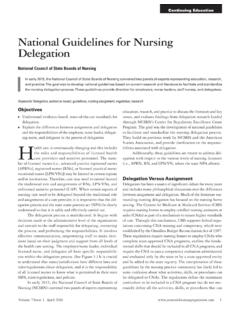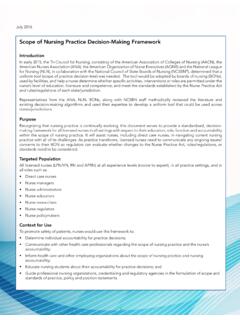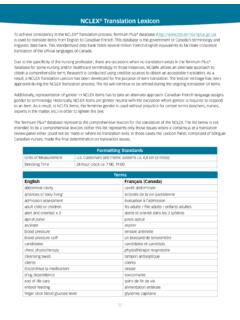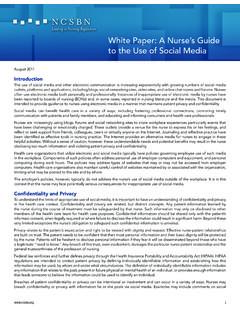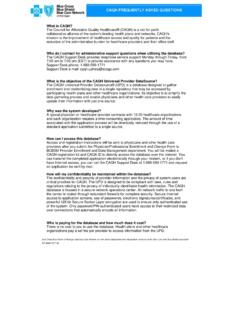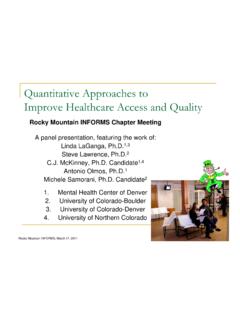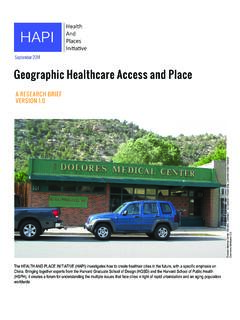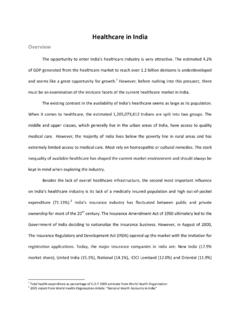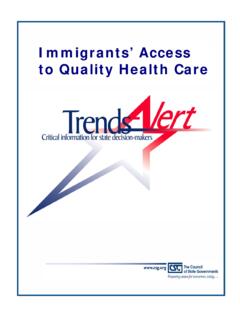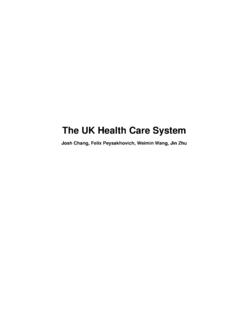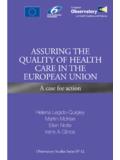Transcription of APRN Barriers Limit Access to Health Care! Talking Points
1 APRN Barriers Limit Access to Health care ! Talking Points APRNs are safe and capable providers for primary care services, particularly in underserved areas. The number of NPs per 100,000 residents between 2006 and 2010 was greatest in states with the least restrictive regulations. Variation among states in APRN s authority to provide primary care and to prescribe results in Barriers to their relocation and practice in areas of greatest need. Stay tuned: a Study by Eric Larson et al funded through WWAMI Rural Health Research Center on rural and urban Nurse Practitioners will explore the relationship of state scope of practice regulations on NP practice characteristics and should be completed in August, 2014 Why is Access to primary care so important?
2 Mortality rates for cancer, heart disease, and stroke have been found to be lower in those parts of the that had greater Access to primary care . ; Patient-reported Access to primary care was associated with a lower individual mortality. Areas with higher numbers of available primary care providers tend to have lower mortality. Nearly 57 million people in the one in five Americans live in areas where they do not have adequate Access to primary Health care due to a shortage of providers in their communities.
3 Pg. 1 What will affect Access to care ? o The physician workforce o Enrollment in medical schools rose by nearly 28% in past 10 years o There was a increase in numbers of physicians in residency training programs This has not produced an increase in proportion choosing primary care or locating in Access needy areas Physician training occurs almost universally in hospitals despite shift in patient care to outpatient and ambulatory care . IOM (institute of Medicine) 2014 Report , Graduate Medical Education That Meets the Nation s Healthcare Needs o The APRN workforce All four APRN roles contribute to expanded Access and Health outcome improvements o APRNs work with the medically underserved and rural populations The projected growth of APRNs and, in particular certified nurse practitioners is expected to persist through 2020.
4 If one compares the percentage of NPs receiving primary care education (85 percent) to the 12 percent of medical student primary care matches, and if one looks at the increase of NPs (1,804) completing primary care programs versus the addition of 19 more medical school matches, one can see the compelling evidence that NPs already have a significantly growing role in primary care delivery. pg. 2 o A high percentage of Colleges and Universities report that recruiting rural NP students is important to their mission and, though the majority of such schools are located in urban areas, they offer a greater percentage of distance education Will expanding Access reduce Health care costs?
5 The share of the economy devoted to Health care has increased from in 1970 to in 2009 and 2010. In the review by Barbara Starfield and others at Johns Hopkins, total Health care costs were lower in areas with higher ratios of primary care providers. A review of studies suggests that patients of primary care providers have lower levels of use, such as fewer diagnostic tests and procedures, and incur equal or lower costs of care . pg. 3
